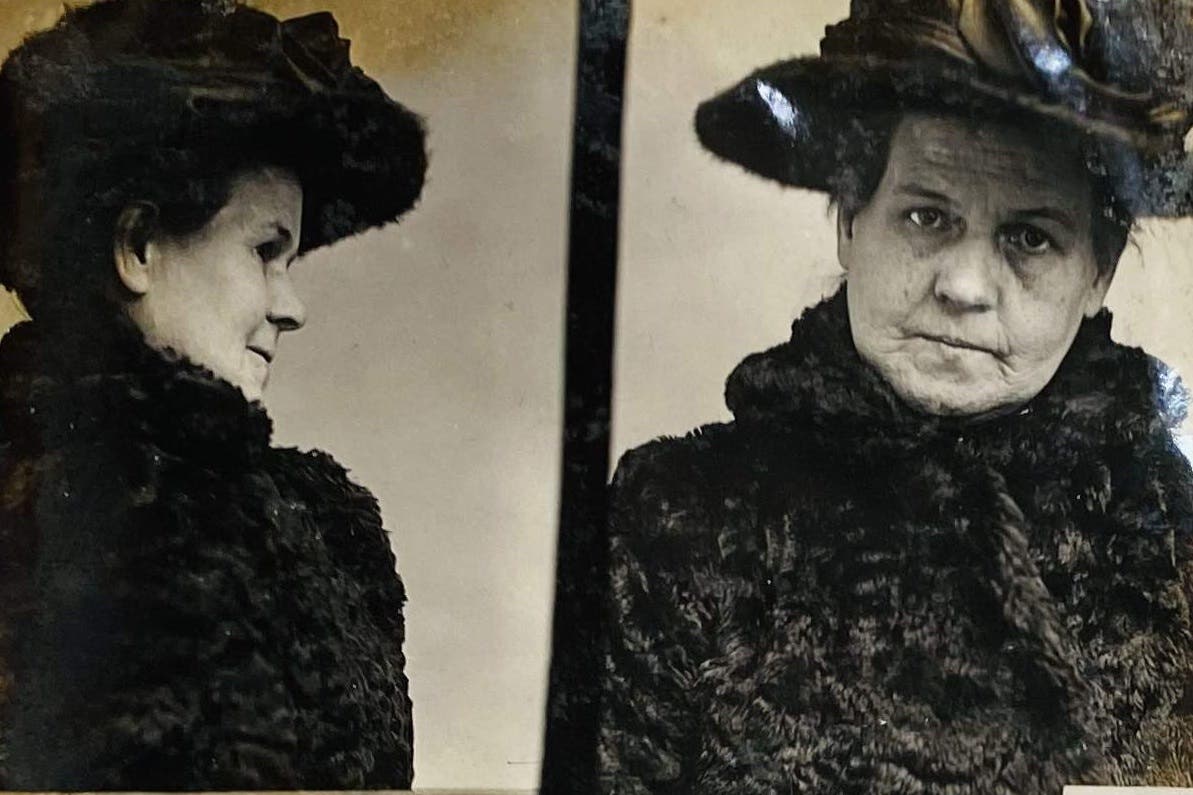Old police ledger featuring 1917 PM murder plotter’s mugshot sells for £10,500
One-time suffragette and anti-war supporter Alice Wheeldon is widely held to have been wrongly convicted.

Your support helps us to tell the story
From reproductive rights to climate change to Big Tech, The Independent is on the ground when the story is developing. Whether it's investigating the financials of Elon Musk's pro-Trump PAC or producing our latest documentary, 'The A Word', which shines a light on the American women fighting for reproductive rights, we know how important it is to parse out the facts from the messaging.
At such a critical moment in US history, we need reporters on the ground. Your donation allows us to keep sending journalists to speak to both sides of the story.
The Independent is trusted by Americans across the entire political spectrum. And unlike many other quality news outlets, we choose not to lock Americans out of our reporting and analysis with paywalls. We believe quality journalism should be available to everyone, paid for by those who can afford it.
Your support makes all the difference.A century-old police ledger featuring a mugshot of a suffragette and anti-war campaigner convicted of conspiring to kill the Prime Minister smashed its estimate to fetch £10,500 at auction.
Alice Wheeldon, a women’s rights campaigner who opposed the First World War, was one of the detainees gazing from the pages of the 500-page book, alongside black and white photographs of others convicted of a host of offences between 1890-1920.
Mrs Wheeldon, of Derby, was convicted – on the evidence of a discredited British spy – of plotting to kill David Lloyd George in 1917 during the war, and was jailed for 10 years, as the ledger records.
The fact that it sold for so much underlines its importance as a unique primary historical resource
The book was estimated to fetch up to £3,000, with Derbyshire Records Office raising £2,000 through a crowdfunding campaign in an ultimately unsuccessful attempt to retain it for the public.
Instead, the hotly contested lot was fought over by internet and phone bidders, eventually going to a private buyer over the telephone on Wednesday, Hanson’s Auctioneers said.
Having been found guilty at the Old Bailey, the record showed Ms Wheeldon was discharged from HMP Aylesbury just months later – at the end of 1917 – on the request of Lloyd George himself.
The spell in prison had taken its toll on her health, with a later note recorded under her mugshot in the ledger in bold red ink: “Died 21.2.19”.
She had been convicted in March 1917 alongside her daughter Winnie, a school teacher, and son-in-law Alfred Mason, a chemist, who are also recorded in the ledger.
Having been a key supporter of the suffragette movement, Mrs Wheeldon was also a well-known pacifist and was opposed to wartime conscription, sending young men to the trenches.
She took in a man claiming to be a conscientious objector, going by the name of Alex Gordon, who was in fact a British spy, and whose evidence about the supposed murder plot was presented in court – without cross-examination – during Mrs Wheeldon’s trial.
Despite the convictions, the use of Gordon saw the government questioned about its methods in using an agent provocateur.
Just weeks after the trial, the intelligence department to which Gordon belonged was shut down, while the agent was sent abroad.
After a recent campaign for justice by Mrs Wheeldon’s relatives, the Criminal Cases Review Commission (CCRC) said although the bid to re-examine the case had merit, the case was too old to justify the expense.
However, in its decision, the CCRC said: “The submissions identified in the application may raise a real possibility that these convictions would be overturned.”
Ms Wheeldon is now viewed as a hero in Derby for her fearless campaigning and boasts a blue plaque in the city’s walk of fame.
The ledger was saved from a skip by a then serving police officer during a clear-out at an old station in St Mary’s Gate, Derby, more than 40 years ago, and was put up for auction by his son.
The 53-year-old engineer, from Staffordshire, whose father has since died, said he was “very happy with the result”.
“It would have been nice if it had gone to Derbyshire Record Office or ended up in a museum, but I suppose it’s all down to who has the deepest pockets. I wish the collector well,” he added.
Charles Hanson, owner of Hanson’s Auctioneers, said it was an “incredible find”, adding “we have never sold anything quite like this before”.
“The fact that it sold for so much underlines its importance as a unique primary historical resource,” he said.